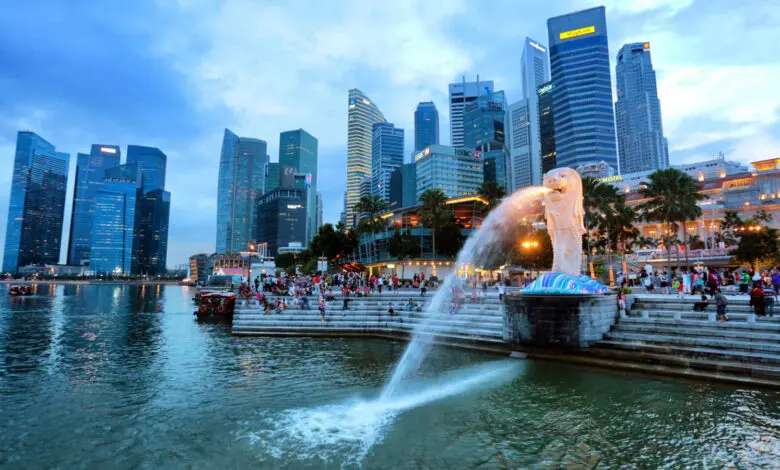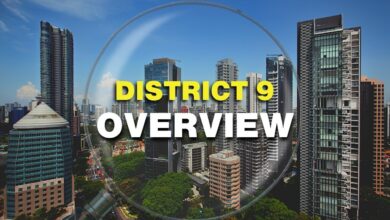Singapore Residential Real Estate Market Size & Share Analysis 2024

Singapore’s residential real estate market in 2024 stands as a beacon of resilience and innovation. Amidst global economic shifts, the city-state has maintained its allure, attracting both local and international investors. The landscape is characterized by a blend of luxury condominiums, public housing estates, and landed properties, catering to a wide spectrum of preferences and incomes. The government’s proactive stance on housing policies continues to ensure affordability and accessibility, balancing market demand with sustainable growth. This dynamic environment sets the stage for a detailed exploration of trends, market size, and the forces shaping the future of residential real estate in Singapore.
Current Trends: Key Insights into the 2024 Residential Real Estate Market

The 2024 residential real estate market in Singapore is marked by technological advancements and evolving consumer preferences which can be seen through products such as The Continuum. Smart homes and eco-friendly buildings are no longer novelties but expectations, reflecting a broader shift towards sustainability. Amidst this tech-driven landscape, the market sees a growing appetite for properties that offer health and wellness amenities. The pandemic’s legacy persists, influencing desires for spacious designs and private outdoor spaces. Furthermore, the trend towards decentralization, with burgeoning interest in suburban areas, underscores a shift in lifestyle aspirations, driving demand away from traditional central districts towards more holistic living environments.
Size Analysis: Quantifying the Scope of Singapore’s Residential Property Sector
In 2024, Singapore’s residential property sector showcases significant breadth and depth. This year, the sector’s valuation reflects robust growth, fueled by steady demand and strategic developmental projects. The government’s consistent release of land under the Government Land Sales (GLS) program supports the expansion of both private and public housing segments. Financial measures and grants aimed at homeownership encourage participation across income brackets, ensuring a vibrant market ecosystem. This quantification not only illustrates the sector’s financial magnitude but also its pivotal role in Singapore’s economy, providing a cornerstone for understanding market dynamics and investment potentials.
Market Share Breakdown: Understanding the Dominant Players in 2024

The distribution of market share within Singapore’s residential real estate sector in 2024 highlights the dominance of key players and the strategic importance of niche markets. Leading developers, both local giants and international firms, command significant portions of the market, driven by their capacity to innovate and adapt to changing consumer demands. Public housing, managed by the Housing Development Board (HDB), continues to represent a substantial share, underpinning the market’s foundation with affordable and accessible options. Luxury and high-end segments, though smaller in volume, exert considerable influence on market trends and pricing, showcasing the diversity and competitiveness of Singapore’s residential landscape.
Growth Factors: Examining Drivers Influencing the Residential Real Estate Market
Several key drivers are propelling the growth of Singapore’s residential real estate market in 2024. Economic stability and a robust job market underpin consumer confidence and buying power, while favorable interest rates enhance borrowing attractiveness. Government policies, including cooling measures and grants, meticulously balance market exuberance with affordability. Additionally, Singapore’s strategic position as a financial and business hub in Asia continues to attract foreign investment, bolstering demand. Urban redevelopment initiatives and infrastructure upgrades also play a crucial role, enhancing livability and accessibility, thereby making certain regions particularly appealing for residential development.
Regional Analysis: Spotlight on Emerging Opportunities Across Singapore

Regional analysis in 2024 unveils distinct opportunities within Singapore’s diverse landscape. The rejuvenation of older estates through the Selective En bloc Redevelopment Scheme (SERS) and similar initiatives has injected new life into mature neighborhoods, attracting a mix of investors and residents. Emerging districts, particularly those near major transport infrastructure projects like the Thomson-East Coast Line, experience heightened interest, predicting shifts in population dynamics and investment hotspots. Additionally, the government’s focus on developing the Greater Southern Waterfront promises transformational growth, positioning it as a future residential, commercial, and recreational nexus, signaling long-term opportunities for stakeholders.
Future Outlook: Projections and Forecasts for Singapore’s Residential Real Estate Sector
Looking ahead, Singapore’s residential real estate sector appears poised for sustained growth, with several factors shaping its trajectory. Continued demand, both local and international, is expected to drive market resilience, while the evolution of work-from-home norms may further influence residential preferences and development locations. Technological integration and sustainability will remain at the forefront of design and construction, aligning with global trends and local aspirations. Government policies will continue to adapt, ensuring market stability and affordability. Overall, the sector is expected to navigate future challenges with agility, maintaining its status as a vibrant and dynamic component of Singapore’s economy.



